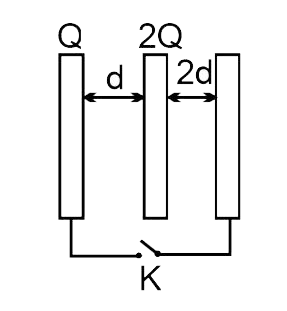The connnections shown in figure are established with the swithc S open. How much charge will flow through the switch if it is closed?

When the switch is open, capacitors (2) and (3) are in series. Their equivalent capacitance is (2)/(3) muF. The charge appearing on each of these capacitors is, therefore , 24 X(2)/(3)muF = 16muC. The equivalent capacitance of (1) and (4), which are also connected in series, is also (2)/(3)muF and the charge on each of these capacitors is also 16muC. The total charge on the two plates of (1) and (4) connected to the switch is, therefore, zero. The situation when the switch S is closed is shown in . Let the charges be distributed as shown in the figure. Q_1 and Q_2 are arbitrarily chosen for the positive plates of (1) and (2). The same magnitude of charges will appear at the nagative plates of (3) and (4). Take the potential at the nagative terminal to be zero and at the switch to be V_0. Writing equations for the capacitors (1), (2), (3)and (4), Q_1 = (24 V-V_0) X1 muF Q_2 = (24 V-V_0) X2 muF Q_1 = V_0 X1 muF Q_2 = V_0 X2 muF From (i) and (iii), V_0 = 12 V, Q_1 = 12muC and Q_2 = 24 muC. The charge on the two plates of (1) and (4) which are connected to the switchis, therefore, Q_2 - Q_1 = 12muC. When the switch was open, this charge was zero. Thus, 12muC of charge has passed through the switch after it was closed.
Topper's Solved these Questions
- CAPACITORSBOOK - HC VERMACHAPTER - CAPACITORSEXERCISE - Short Answer
7 Videos
- CAPACITORSBOOK - HC VERMACHAPTER - CAPACITORSEXERCISE - Objective 1
12 Videos
- CAPACITORSBOOK - HC VERMACHAPTER - CAPACITORSEXERCISE - Exercise
2 Videos
- BOHR'S MODEL AND PHYSICS OF THE ATOMBOOK - HC VERMACHAPTER - BOHR'S MODEL AND PHYSICS OF THE ATOMEXERCISE - Exercises
46 Videos
- DISPERSION AND SPECTRABOOK - HC VERMACHAPTER - DISPERSION AND SPECTRAEXERCISE - Exercises
11 Videos
Similar Questions
Knowledge Check
The flow of charge through switch S if it is closed is
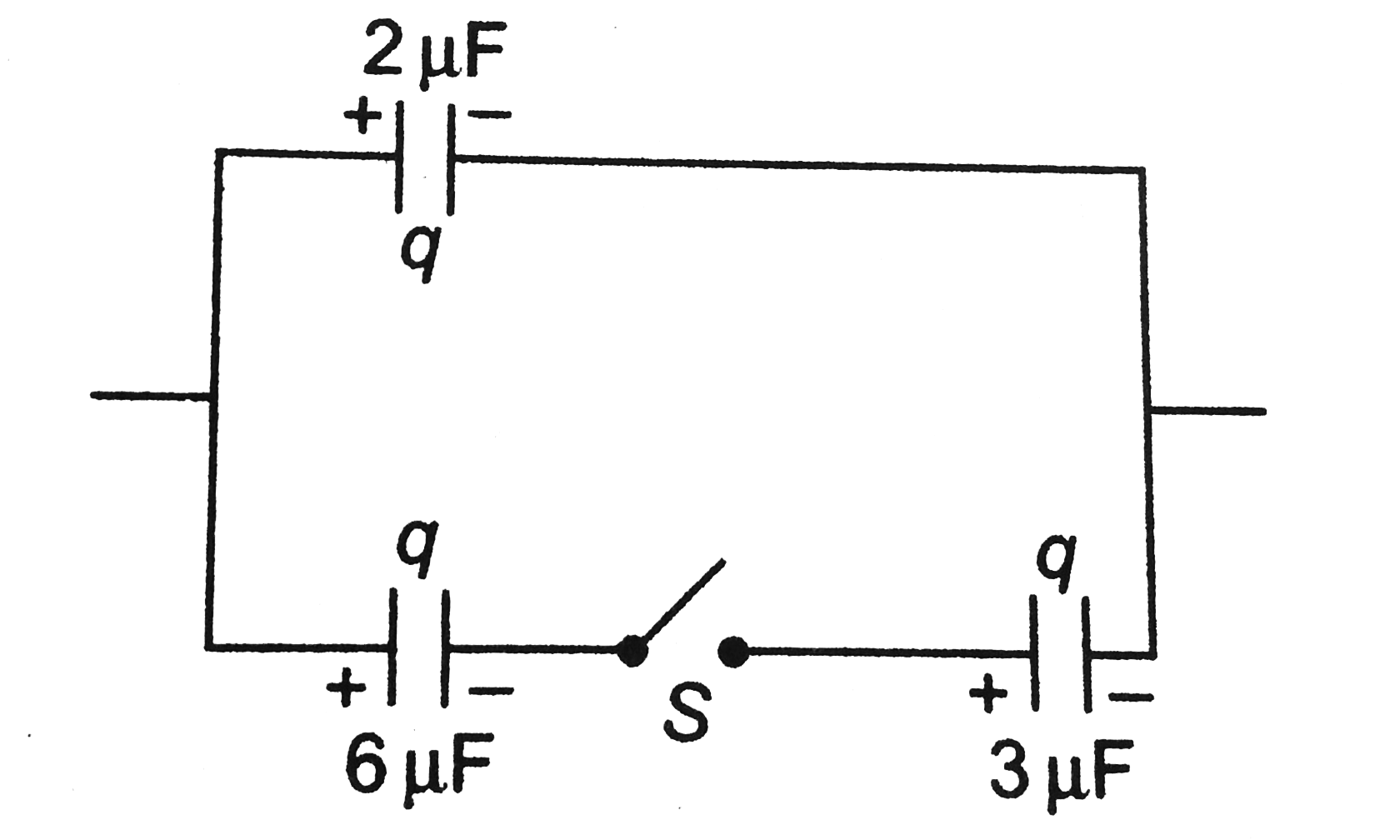 AzeroBq4C2q3Dq3
AzeroBq4C2q3Dq3Three large plates are arranged as shown. How much charge will flow through the key k if it is closed?
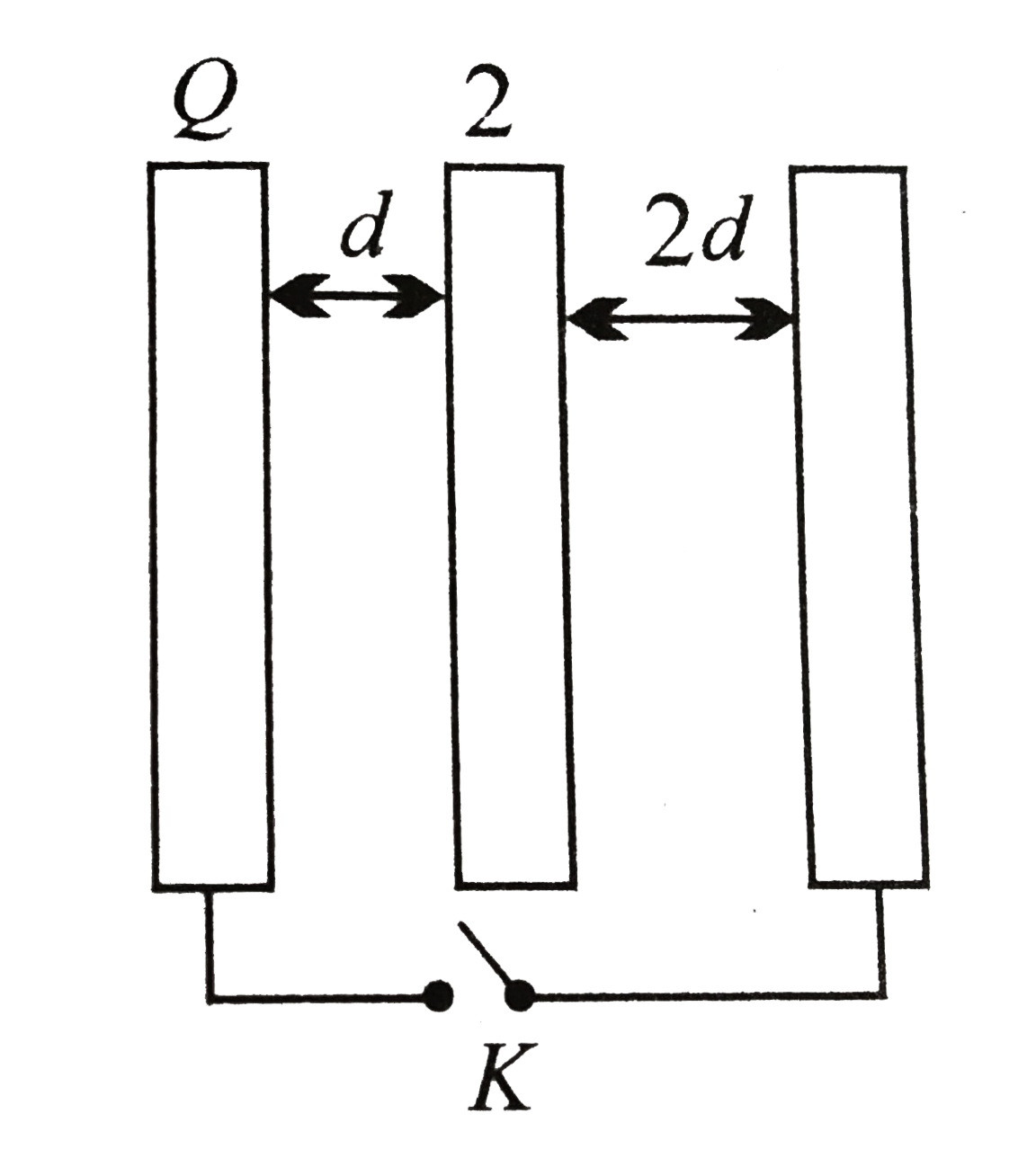 A5Q/6B4Q/3C3Q/2Dnone of these
A5Q/6B4Q/3C3Q/2Dnone of theseIn the circuit shown, find the amount of charge that will flow through the key when it is closed.
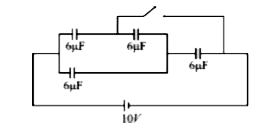 A20μCB40μCC80μCD120μC
A20μCB40μCC80μCD120μC
The capacitors in are initially uncharged and are connected as in the diagram with switch S open. The applied potential difference is Vab=+360V.
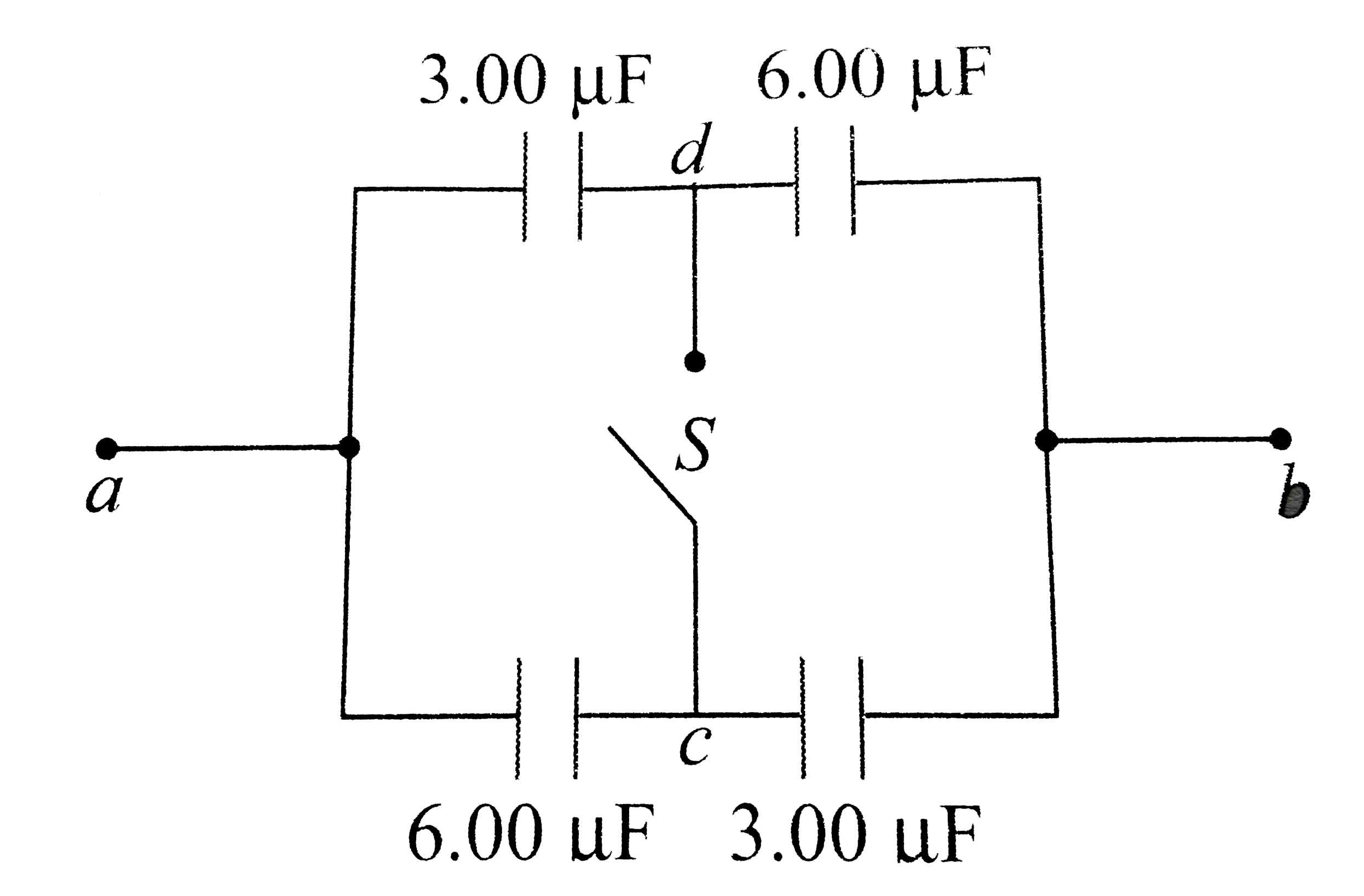 .
.
a. What is the potential difference Vcd
b What is the potential difference across each capacitor after switch S is closed?
c. How much charge will flow through the switch after it is closed?
View Solution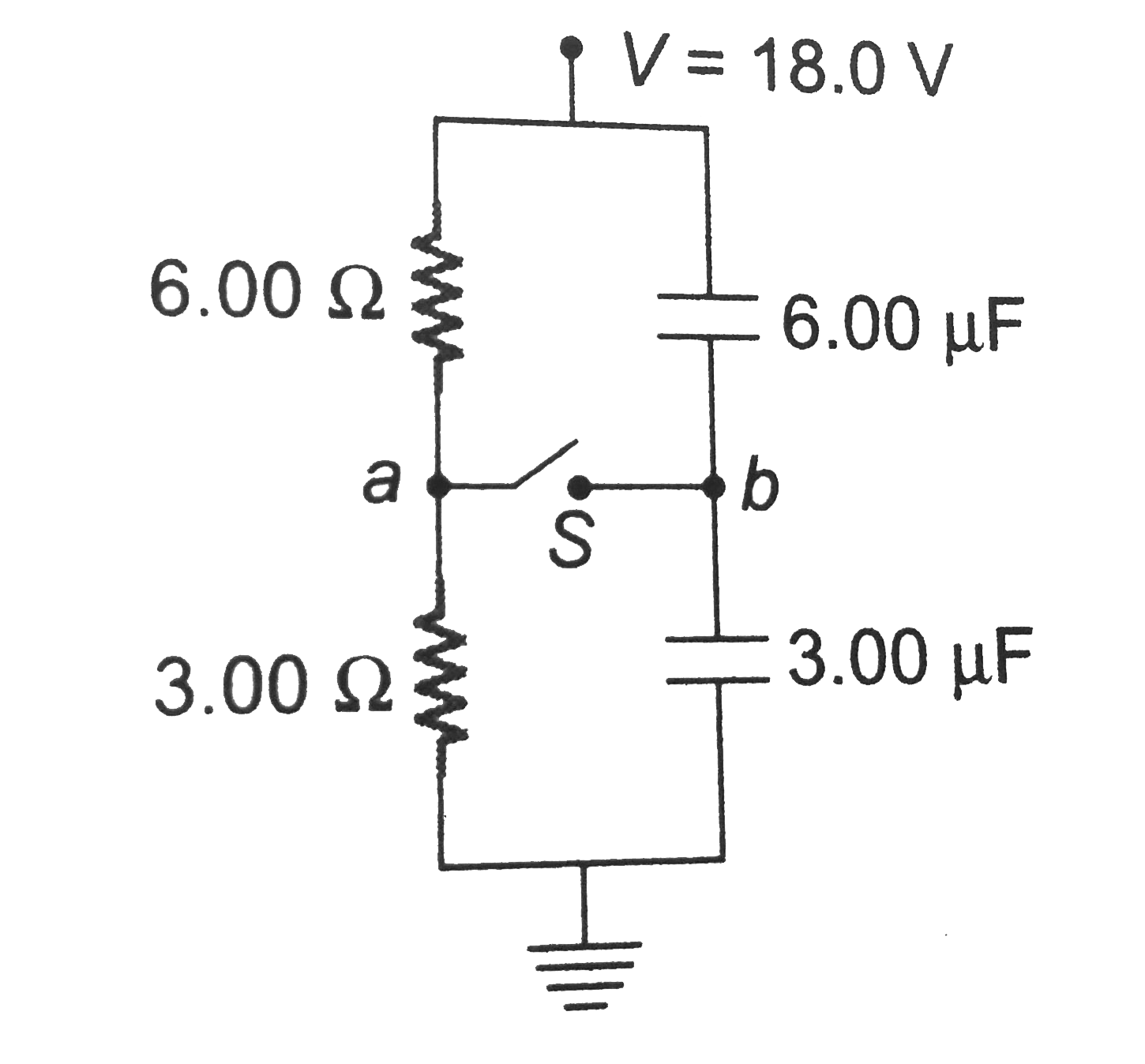
(a) What is the potential of point a with respect to point b in figure, when switch S is open?
(b) Which point, a or b, is at the higher potential?
(c) What is the final potential of point b with respect to ground when switch S is closed?
(d) How much charge flows through switch S when it is closed?
View Solution(a) Taking the potential at the point B to be zero, find the potential of point D.
(b) Find VA−VB. Under what condition is it equal to zero.
(c) Consider the situation as shown in diagram. How much charge will flow through cell if the switch S is closed?
(d) In the circuit shown in the figure, calculate
(i) Potential difference between the points X and Y.
(ii) Potential of the point X when switch S is closed.
(iii) Charge flown through the switch when it was closed.
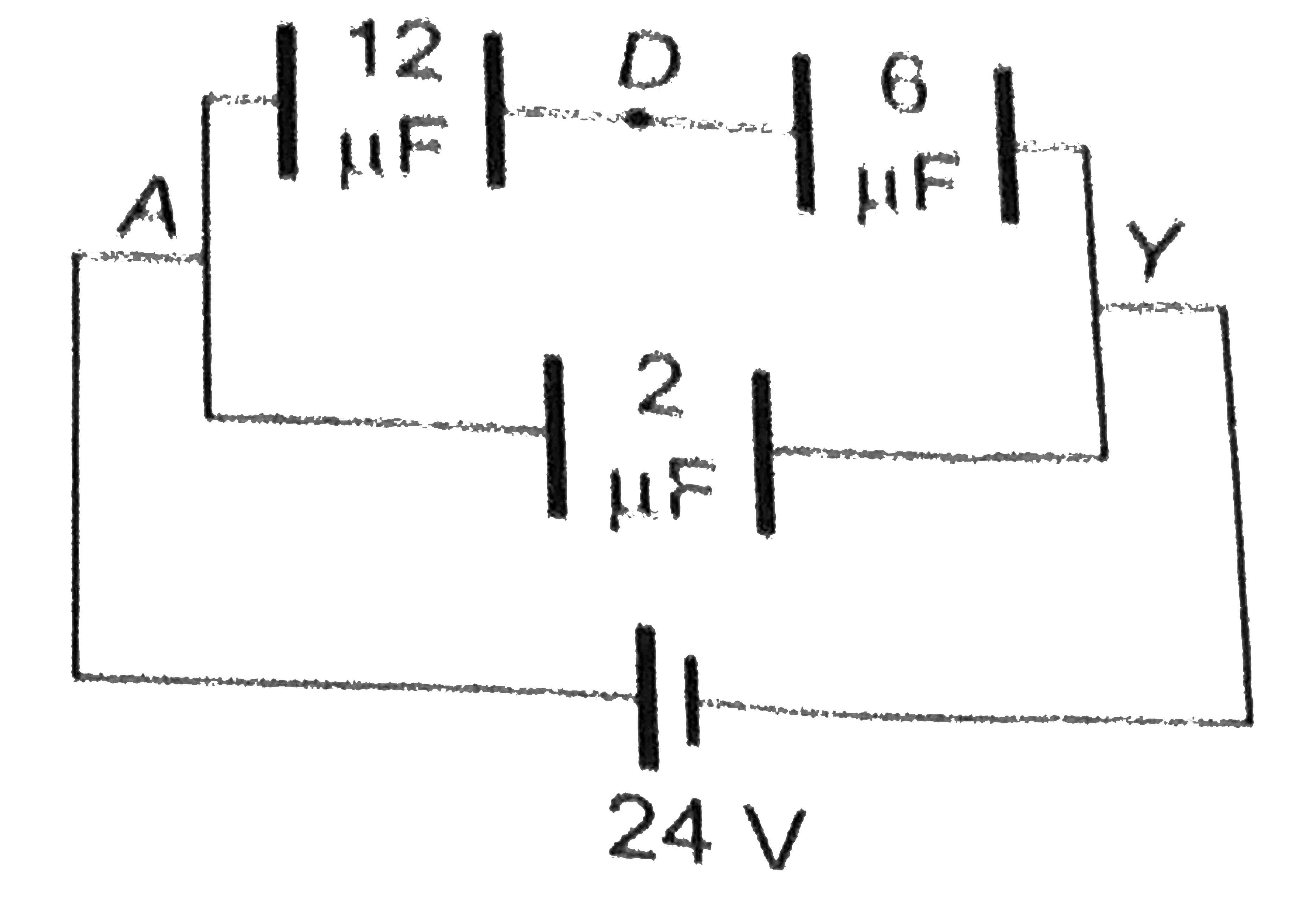
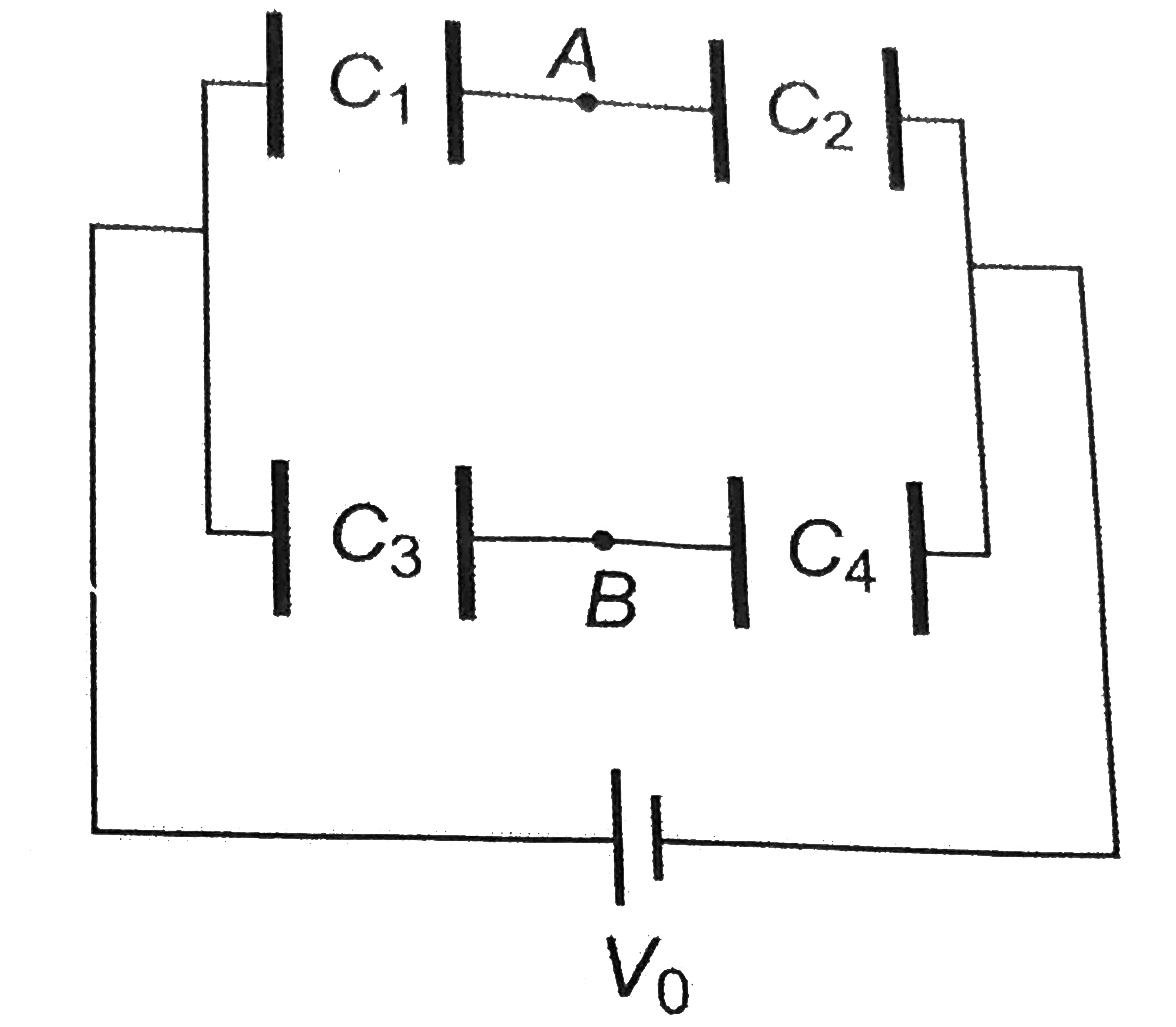

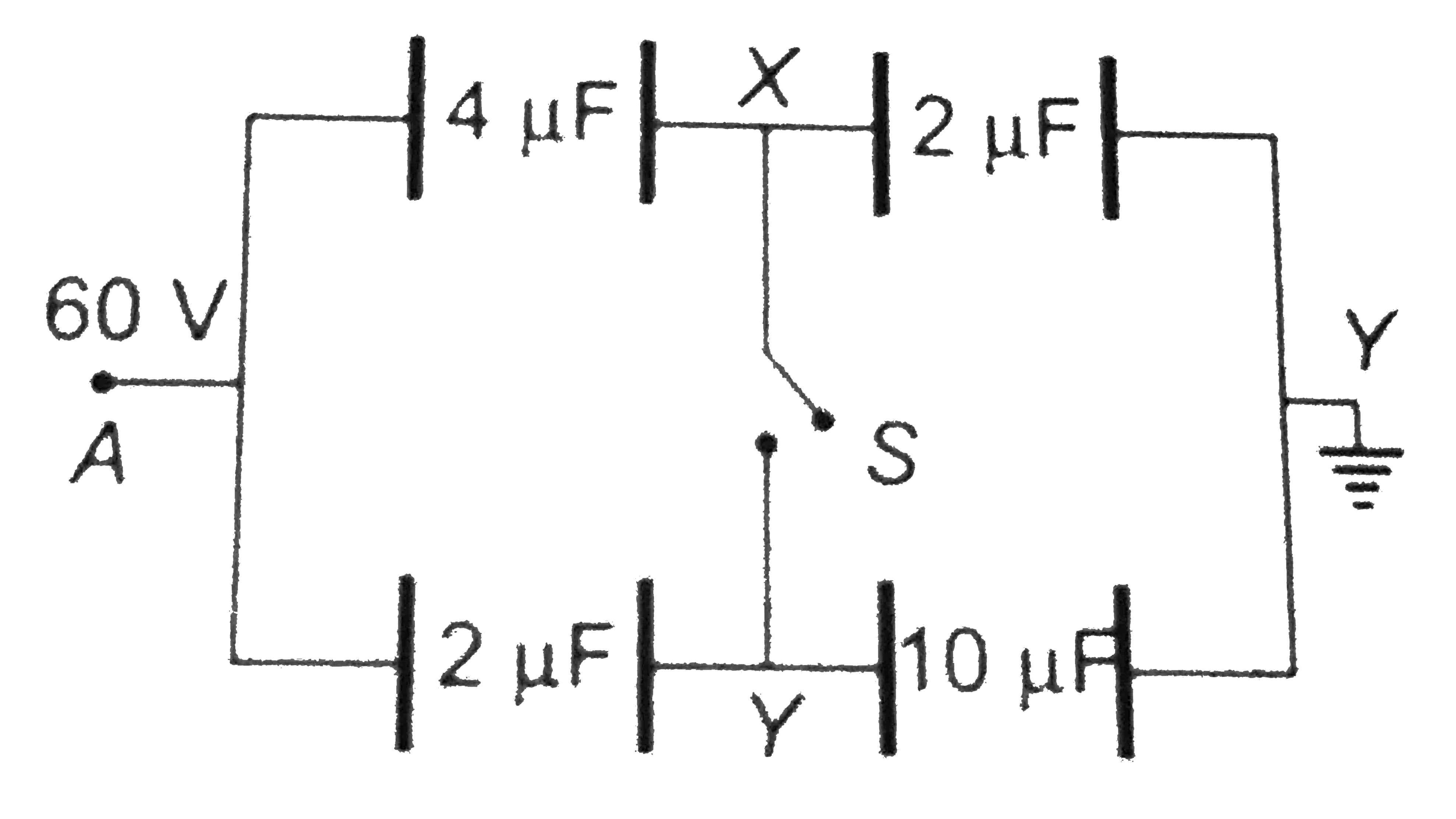
View SolutionA point charge q is placed at a distance x from the centre of a conducting sphere of radius R(lt x). (a) How much charge will flow through the switch S when it is closed to ground the sphere? (b) Find the current through the switch S when charge ‘q’ is moved towards the sphere with velocity V.
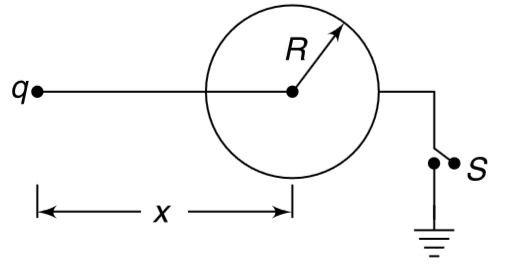
View SolutionThe circuit was in the shown state from a long time. Now the switch S is closed. The charged that flows through the switch is
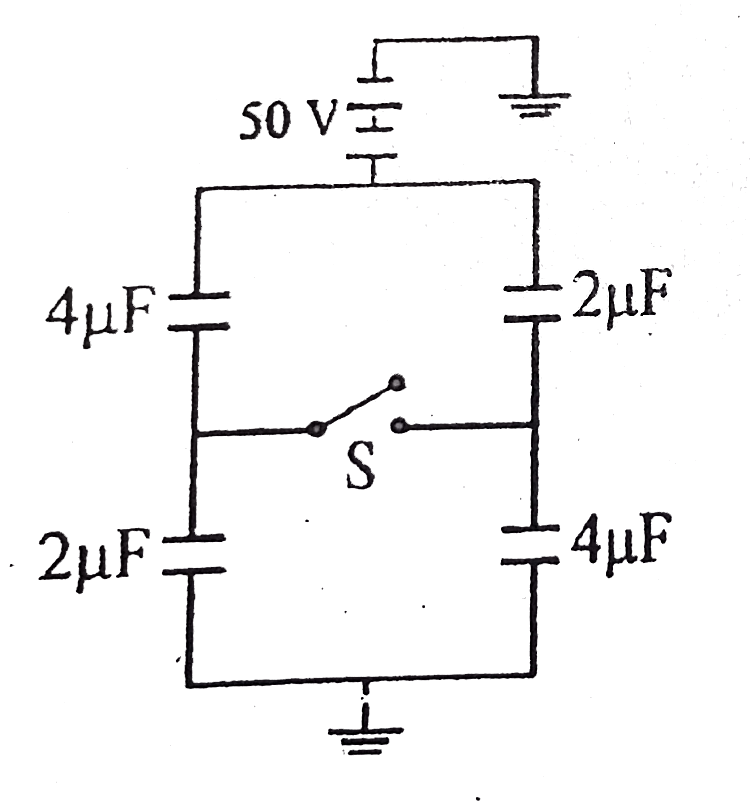
View Solution

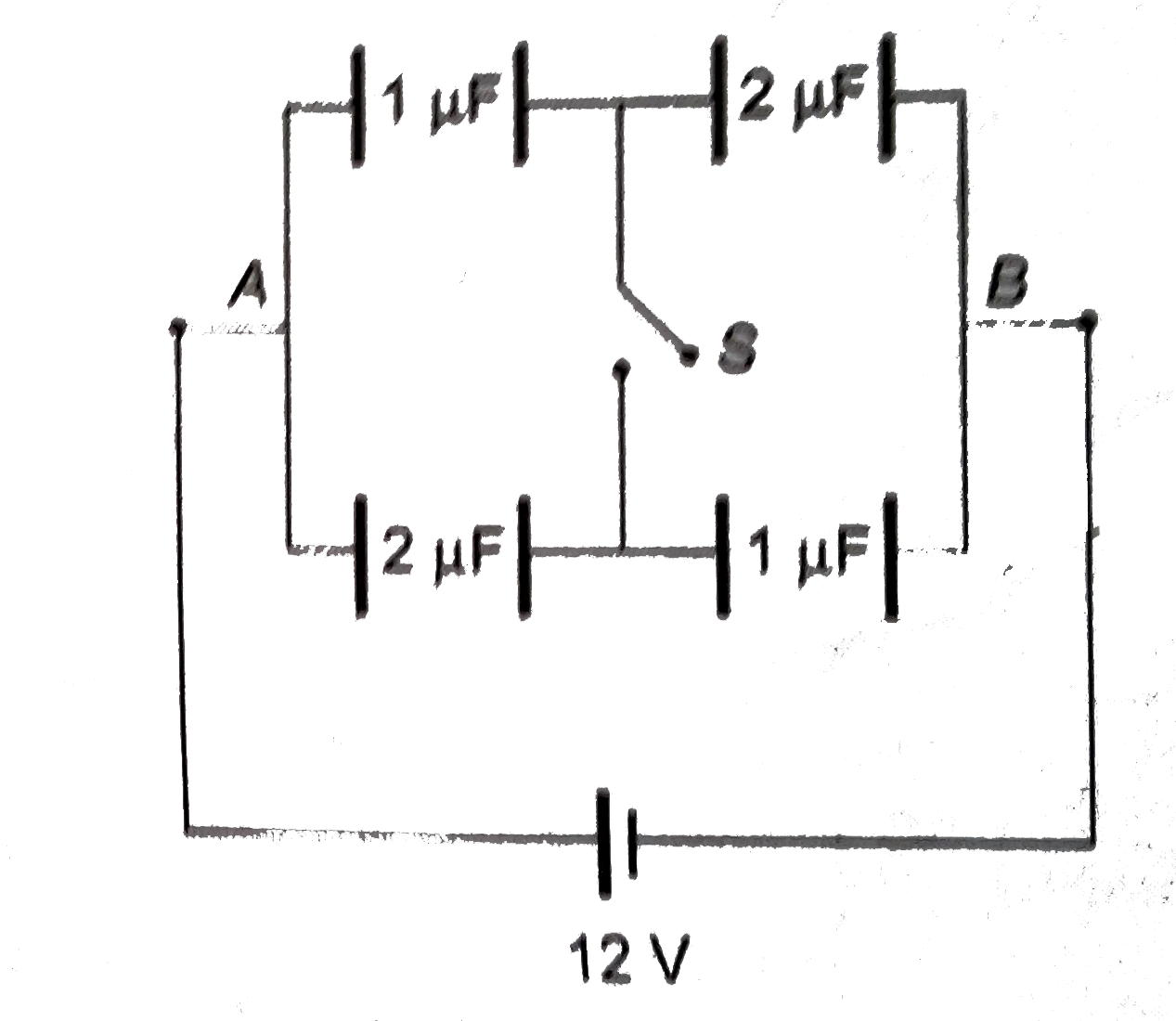 .
.